By David Alan Johnson
“I jammed the throttle wide open and, attacking the Me-109 from the port quarter, fired one burst of four seconds and three bursts of two seconds each,” Pilot Officer William R. Dunn of No. 71 (Eagle) Squadron, Royal Air Force, said of the encounter with the first German aircraft he shot down. “At about 50 yards … I could see my machine gun bullets striking all over the German’s fuselage and wingroot. Then he began to smoke.”
Dunn followed the enemy fighter, continuing to shoot at him, and watched as the plane dove straight into the ground, “where it crashed with a hell of an explosion near a crossroad.”
This action took place on July 2, 1941, during an escort mission to Lille, France. Number 71 Squadron, the first of three all-American Eagle Squadrons, formed part of a fighter escort for 12 RAF Bristol Blenheim bombers. Pilot Officer Dunn’s Messerschmitt was the first enemy aircraft to be shot down by a member of an Eagle Squadron. The official time of the kill is given as 12:35 pm Five minutes later, at 12:40, Pilot Officer Gregory Augustus “Gus” Daymond accounted for the Squadron’s second kill, also an Me-109. This air action would start a controversy that would not be settled until many years after the Second World War had ended.
Dunn and Daymond did not have very much in common, except for the fact that they belonged to the same squadron and they both risked a heavy fine and a long prison sentence by leaving the United States to join the Royal Air Force. Daymond had been working as a make-up man in Hollywood, which had a very large Jewish community. “People on the film sets used to listen to Hitler’s speeches between takes—including Groucho Marx, who recalled that he got the chills from listening to ‘that lunatic’ scream,” Daymond remembered. “We were immensely concerned, and there was an atmosphere of dread and foreboding. Well, I went tearing off to do my stuff.” At the age of 19, due to what he described as a “sophomoric but genuine sense of social consciousness,” Daymond left California for Canada and, eventually, England and the Royal Air Force.
Dunn’s route to the RAF was much longer and more difficult. In 1939, he was working for a Dallas, Texas, advertising agency and taking private flying lessons. When Hitler invaded Poland in September, Dunn tried to join the Royal Canadian Air Force. He went to Canada and showed the recruiting officer his log book, which indicated that he had 160 flying hours. The RCAF was not accepting American volunteers so Dunn joined the Canadian Army instead, hoping to transfer to the air force later.
The recruiting sergeant for the Seaforth Highlanders said that he could not accept any Americans, either, so Dunn said that he was from Moosejaw. He had no idea where Moosejaw was (it is in Saskatchewan province), but it was the first Canadian town that came to mind. Fortunately, the sergeant bought his story. Dunn was soon wearing the regimental kilts of the Seaforth Highlanders and sailed to England in December 1939. Before he finished his training, the British Expeditionary Force was evacuated from the beaches of Dunkirk and France surrendered to Germany. During the summer of 1940, Dunn was credited with shooting down two Ju-87 Stuka dive bombers that were attacking the camp of his old outfit.
During the Battle of Britain, RAF Fighter Command was becoming desperately short of pilots. The Air Ministry in London invited anyone with 500 or more hours of flying time to transfer to the RAF. This was the chance that Dunn had been waiting for. Even though he had only 160 hours, he applied. While he was filling out his application, Dunn said that his pen must have slipped, “with my 160 looking like a 560.” The Air Ministry did not notice the slip, so Dunn kept his mouth shut.
The inflated number accomplished Dunn’s goal; He was accepted into the RAF. In the spring of 1941, he traded his regimental kilts for air force blue. Because of the urgent need for pilots, Dunn was rushed through pilot training in an accelerated course. In April 1941, he was posted to No. 71 (Eagle) Squadron, which flew Hawker Hurricane fighters out of Martlesham Heath, Essex.
When he first arrived, Dunn thought that his reception into 71 Squadron was somewhat cool, but he did not know why. “Maybe it was because I’d been an enlisted infantryman in the Canadian Army,” he later said, “who had crawled from the muddy trenches into their blue heaven.”
Whatever the reason, Dunn felt like an outsider. After a while, he discovered that the squadron had a clique called the “fair-haired boys,” who had friends with political influence. “If you didn’t belong to their clique,” he noticed, “you were cut out of the pattern and pushed into the background.”
Following his first victory on July 2, Dunn said that he ran head-on into the fair-haired boys—Daymond was given credit for shooting down the squadron’s first enemy aircraft, even though it was clear that Dunn had been first. Dunn played down the slight, saying that it “didn’t really make a hell of a lot of difference,” but he was unhappy about it. “My claim was played down in favor of Gussy’s.” Daymond was a member of the clique; Dunn was not.
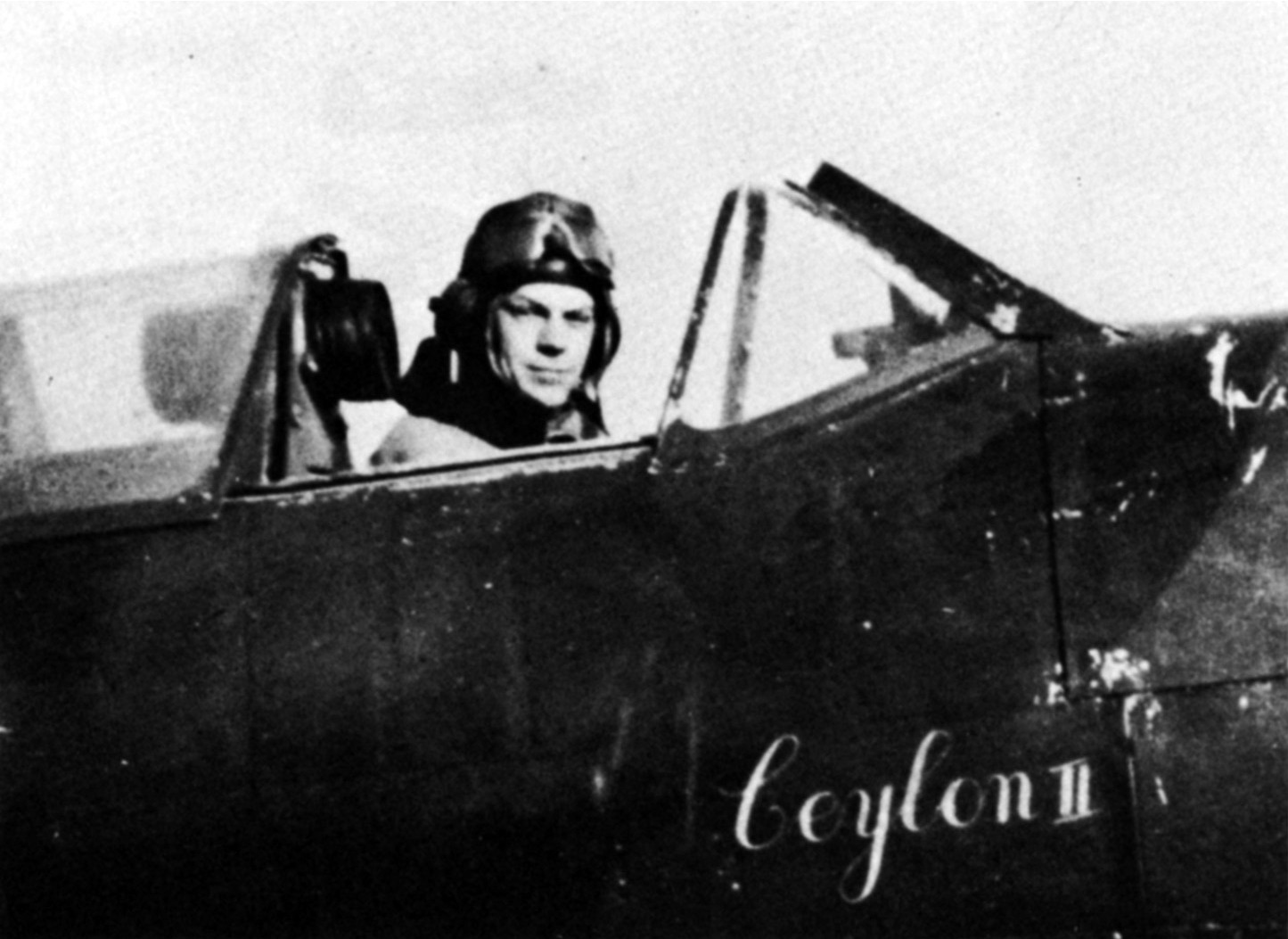
According to Dunn, this snub was the work of the squadron’s intelligence officer, J. Roland ‘Robbie’ Robinson, a Member of Parliament who had influence at the Air Ministry. Robinson later became Lord Martonmere. Dunn felt that Robinson was always pushing his friends, including Daymond, for promotions and decorations at the expense of anyone not in the charmed circle. Combat reports would later confirm that Dunn was indeed the first Eagle Squadron pilot to destroy an enemy aircraft.
From the Cockpit of His Hurricane, Daymond Watched an Me-109 Going Down. For the First Time, Daymond Realized That He was in the Middle of a Real War.
However, there were more immediate concerns. On July 6, 71 Squadron had another escort assignment to fly. A force of Blenheim bombers was being sent to Lille again, which would mean another encounter with the “Abbeville Boys,”—nine squadrons of Me-109s of Jagdgeschwader 26 based at nine airfields in the Abbeville area. Jagdgeschwader 26, commanded by General Adolf Galland, was considered the elite Luftwaffe fighter wing in the West. Galland set the example for his group; he already had 70 Allied aircraft to his credit.
German fighters attacked the RAF bombers shortly after they crossed the French coast, and the escorting fighters did their best to intercept the incoming Messerschmitts. In the fighting, Daymond shot down one Me-109. Dunn was credited with half a kill, sharing a Messerschmitt with a Polish pilot from 306 Squadron.
Air combat came as a nasty dose of reality for some of the pilots. Although they knew they would be shooting at the enemy, it somehow never occurred to them that the enemy would be shooting back. Daymond found out how unforgiving—and permanent—air fighting could be. Over his earphones he heard a “terrific quacking” from one of the Polish pilots whose flight had been jumped by Messerschmitts. At first they called to each other in English. As the fighting became more frantic, they “blew their gaskets and began to garble-garble among themselves in Polish, and we didn’t know what the hell was happening.”
From the cockpit of his Hurricane, Daymond watched an Me-109 going down. A Pole in a Spitfire stayed right behind it, “shooting it into mighty small pieces,” blasting away until it hit the ground. For the first time, Daymond realized that he was in the middle of a real war.
The rivalry between Dunn and Daymond continued to develop throughout the summer. The two were in a contest to see who could shoot down the most German airplanes, and the tone of the rivalry was not friendly. Throughout July and August the lead changed hands several times. Sharing the Me-109 with the pilot from 306 Squadron gave Dunn a half-plane lead. Daymond then shot down a Messerschmitt, which gave him a half-plane advantage. Dunn regained the lead on July 21, when he destroyed another Me-109 near Lille. Daymond then scored his third kill, but Dunn regained the lead on August 8, when he downed an Me-109 west of Mardyck. Through most of August, Dunn maintained a three and one-half to three advantage.
By August 27, 71 Squadron had been issued Spitfire Mark II fighters. On that day, the entire squadron was escorting nine Blenheims to France. The bombers’ target was Lille again, which would mean another encounter with the yellow-nosed Messerschmitts of the Abbeville Boys. Almost as soon as the Spitfires crossed the enemy coast, antiaircraft fire began popping in the sky all around them. When the flak subsided, everyone kept a sharp eye for enemy fighters.
An alert Spitfire pilot spotted a formation of three Messerschmitts; Dunn looked up and saw them, about 4,000 feet above. He did not know there was an Me-109 behind him until tracer fire shot past his cockpit. Dunn “shoved everything into a corner,” violently evading the fighter behind him, and shouted a warning to the rest of his flight. The only damage done had been to his composure.
Even though the fight was only 20 or 30 seconds old, Dunn had already seen several fighters, from both sides, going down. He caught sight of two Messerschmitts in the distance, waiting for the chance to finish off any stragglers or cripples. Dunn climbed to a position above and behind them, with the sun at his back, then pushed the stick forward and dove after them. The leader saw Dunn coming and broke away, but his wingman made a slow, climbing turn to the left, right in front of Dunn.
When he was about 150 yards from his target, Dunn pressed the Spitfire’s firing button. “Pieces of the aircraft flew off, and engine oil splattered my windscreen,” he wrote in his combat report. The enemy fighter faltered under the impact of the Spitfire’s eight machine guns, and pieces of it flew off the fuselage. “The plane looked like a blowtorch with a bluish white flame as it went down,” he said.
Dunn watched the Messerschmitt crash into a French field below. He felt a bit sorry for the pilot, who never made any real effort to get away from him, and was probably just a green kid, right out of training school. “What the hell,” he added, “they all count.”
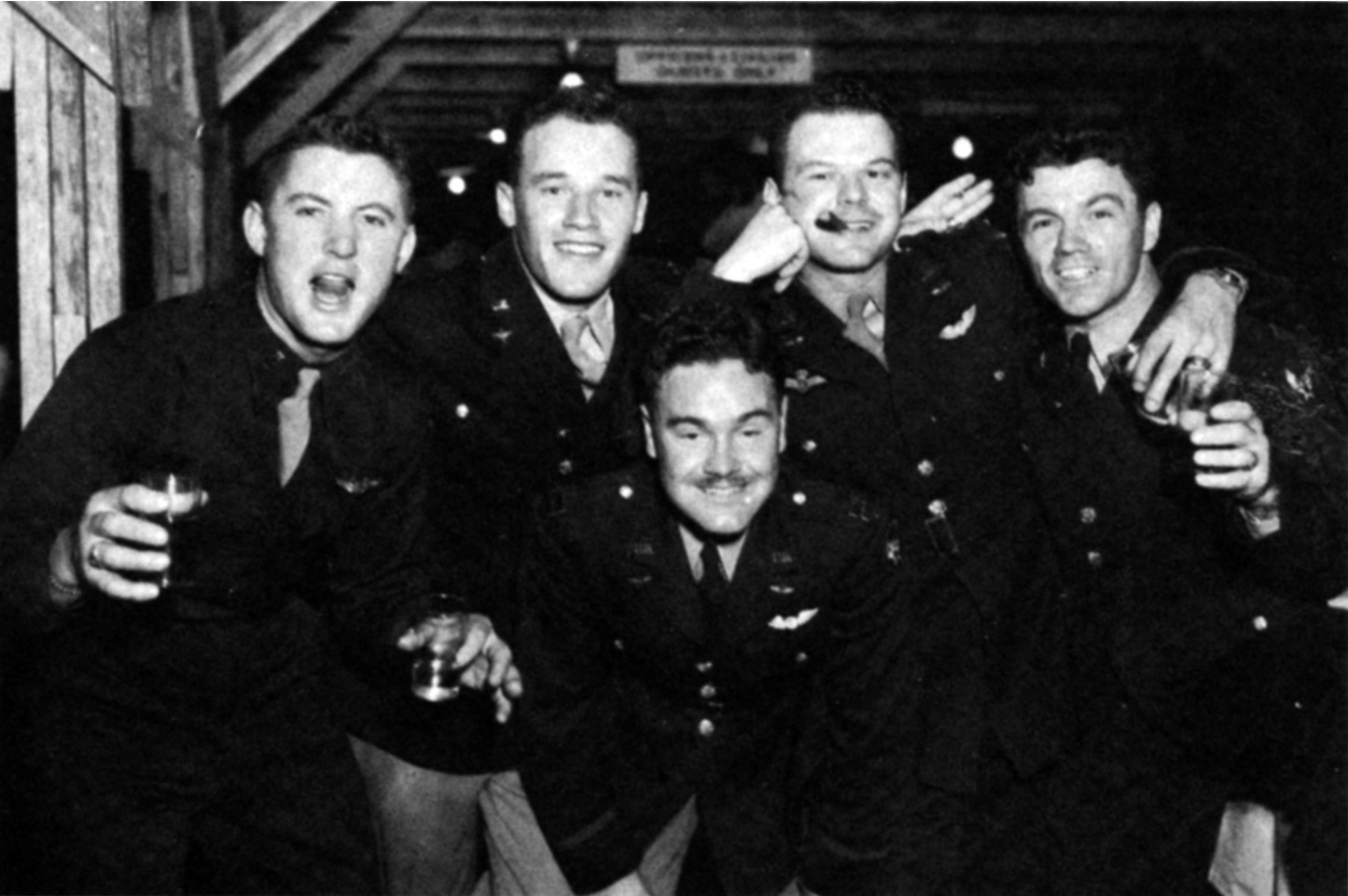
Off in the distance, Dunn could see the Blenheims dropping their bombs. There were still nine of them. He felt something hit his port wing and saw tracers flash past him. Dunn thinks that he was attacked by the leader of the pilot he had just shot down.
He reacted instantly. “I yank back the throttle, give my prop full fine pitch, jam the flaps down, and violently skid my aircraft out of his gunsight,” remembered Dunn. The Spitfire’s airspeed dropped off immediately, and the Messerschmitt shot past, skimming not more than 10 feet above Dunn’s head. He could see the black crosses on the German fighter, along with a red rooster painted on the side of the cockpit, a unit marking identifying the airplane as part of III Gruppe, Jagdgeschwader 2. Now the situation was reversed. Dunn was behind the Messerschmitt, and the hunter had become the hunted.
After a three- or four-second burst, a jet of gray smoke sprouted from the German’s engine. The Messerschmitt burst into flames, rolled over and veered away, out of control. On the way down, its tail section broke off. Kill number two for the day gave Dunn a total of five.
With ammunition left, Dunn decided to go after another Messerschmitt about 500 feet below him. The German pilot saw his attacker and took evasive action, but Dunn managed to fire a short burst and saw smoke trail from the enemy fighter. He was about to fire another burst when he was jumped by four more Me-09s.
Dunn did not Know Exactly how Badly He had Been Injured. His Head Hurt, and His Right Boot was Covered in Blood.
The first German missed. Dunn saw cannon shells go past him and curve away. The second pilot was a better shot. Dunn heard explosions and a banging like hail as bullets and cannon fire hit his Spitfire. A cannon shell blew a hole in his instrument panel. His right foot bounced off the rudder pedal and went numb. Something, actually two somethings, banged into his right leg, and his head snapped forward. Dunn began to lose consciousness. Through the increasing haze, he could make out bits of metal and broken glass on the cockpit floor.
His head cleared after a short while, and Dunn found himself all alone in the sky. He knew that he was about five miles from the Channel coast but did not know exactly how badly he had been injured. His head hurt, and his right boot was covered in blood. The Spitfire’s engine was running rough, but he had enough fuel to make it back to England. His flight across the Channel seemed endless, but Dunn managed to set his damaged Spitfire down on the grass airfield at Hawkinge, Kent, just inland from the Channel.
From Hawkinge, Dunn was taken by ambulance to Royal Victoria Hospital in Folkstone. Doctors informed him that a cannon shell had blown off the front of his right foot. He was also told that two machine gun bullets had gone through his right calf and that another bullet had creased the back of his leather flying helmet. He had a three-inch long welt on his scalp, but if he had been leaning back another inch or two he would be dead.
When he was fit enough to return to duty, Dunn was posted to Canada and a training command. Before leaving for his new job, he decided to go back to 71 Squadron at North Weald to visit his squadron mates and pick up his belongings. He was not happy with what he found. Somebody had helped himself to Dunn’s shirts, socks, underwear, and towels. What was left had been stuffed into a parachute bag and dumped on the floor, where Dunn found it in the middle of a puddle of water.
When Dunn found out that his rival Daymond had been awarded the Distinguished Flying Cross and had also been given official credit as the first American ace of the war, he was even more unhappy. His friend and squadron mate Chesley “Pete” Peterson had also been awarded the DFC. To Dunn, this did not seem right. Daymond did not shoot down his fifth enemy aircraft until September 19, over three weeks after Dunn, and Peterson only had two victories. The DFC was usually awarded to pilots who had five enemy planes to their credit.
To Dunn, this looked like another example of Robinson’s work. Both Daymond and Peterson were members of Robinson’s clique. It seemed as though Dunn’s accomplishments had been deliberately overlooked in favor of Robinson’s fair-haired boys. “What about my victories. Didn’t they count?” Dunn asked. He never could prove anything, but he had his suspicions.
Favoritism or not, Daymond was listed as the first official American ace of World War II. Dunn thought otherwise, although there was nothing he could do about it. He went to Canada to train RCAF cadets, and transferred to the U.S. Army Air Force in 1943. “It was sort of implied that if I didn’t agree to a transfer, they’d come and get me,” he said. He finished the war as a lieutenant colonel. He also shot down three more enemy aircraft. But in spite of his war record, Dunn was always bothered by the feeling that he had been deliberately snubbed. “I always felt that my honesty was being questioned,” he said.
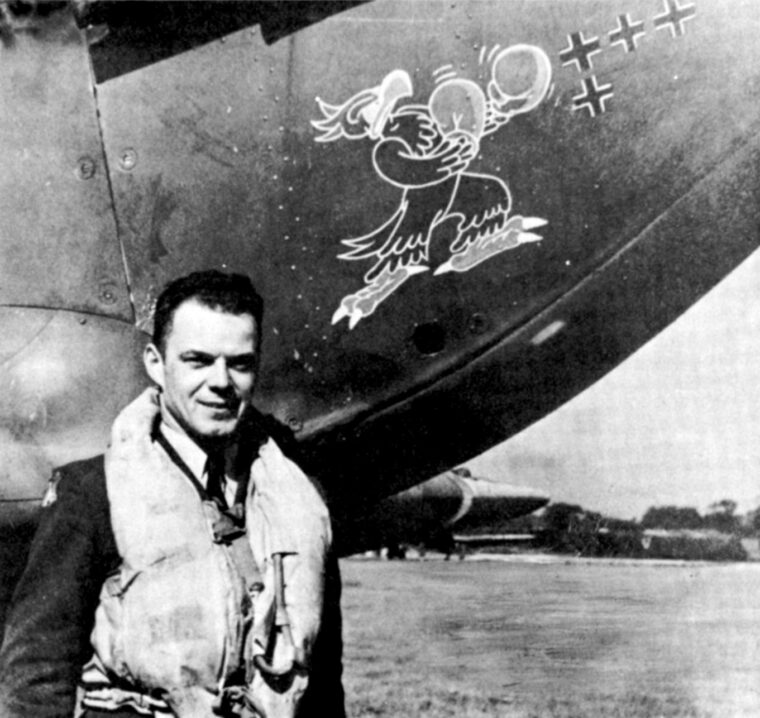
For the next 24 years, Daymond remained the first official American ace. In 1965, a fluke brought the old rivalry to the surface again. The U.S. Air Force Museum in Dayton, Ohio, launched an appeal for Eagle Squadron artifacts and memorabilia for its collection. The Eagles were, after all, the first Americans to fight Hitler. Dunn responded to the museum’s request by sending one of his old RAF uniforms, some photos, and his logbook from his days at 71 Squadron.
“Having had My Victories Confirmed for the Second Time Should Settle This Matter Once and for All.”
The museum’s director, Colonel William F. Curry, was glad to accept Dunn’s donations. He took special interest in Dunn’s logbook, and in the dates of his five victories in 1941. After going over the logbook himself, Curry asked Air Marshal Sir Patrick Dunn, RAF (no relation to William Dunn), to recheck the official records. It seemed to him that Dunn’s claim as first American ace might be valid, after all.
Air Marshal Dunn and W.J. Taunton of the RAF Historical Branch checked and rechecked the RAF files. After careful study, they concluded that Dunn had scored his fifth victory before Daymond or any other American pilot.
Dunn received a letter from Raymond F. Toliver, historian of the American Fighter Aces Association, dated March 19, 1968, informing him of the Association’s decision. In the letter, Toliver said, “The American Fighter Aces Association is happy to inform you that in a recently completed study in conjunction with the Royal Air Force, victory credits clearly indicate that you are America’s first fighter ace of World War II.” The letter went on to say that the records of the Association, which has the final word on victory claims “are being changed to reflect this fact.”
Dunn was serving as air strike plans officer at Tan Son Nhut Air Base, Vietnam, when the letter reached him. “I was certainly glad to have the matter settled,” he later said. “Having had my victories confirmed for the second time should settle this matter once and for all.”
Daymond refused to comment on the Fighter Aces Association’s decision. He said that Warner Brothers bought the rights to his life story and his wartime experiences in 1946, and as far as he was concerned that precluded him from making any sort of comment. However, Daymond’s friend Chesley Peterson was under no such restraint. In 1975, he said that he did not believe Dunn’s claim and that he did not agree with the American Fighter Association’s decision. In his eyes, the fact that Daymond had been awarded the Distinguished Flying Cross was enough evidence to back up his claim.
“It is evident to me that for Gus to have been given a DFC when he was just a section leader,” Peterson commented, “it had to be awarded for being the first American Eagle to become an ace.”
If J. Roland ‘Robbie’ Robinson had anything to say about the AFAA’s decision, there is no record of it.
Author David Alan Johnson has written numerous articles for Sovereign Media publications. He writes from his home in Union, N.J.

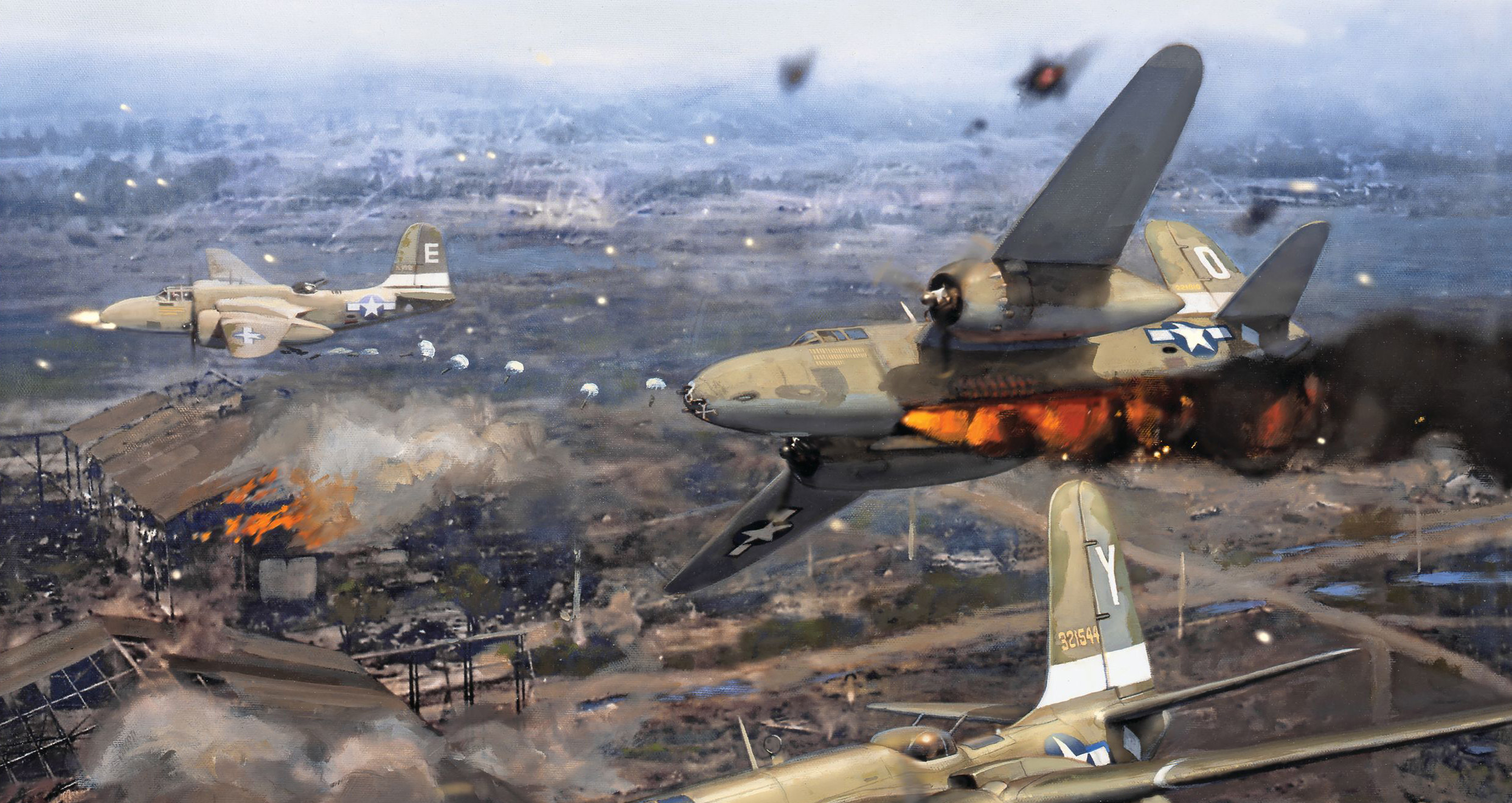
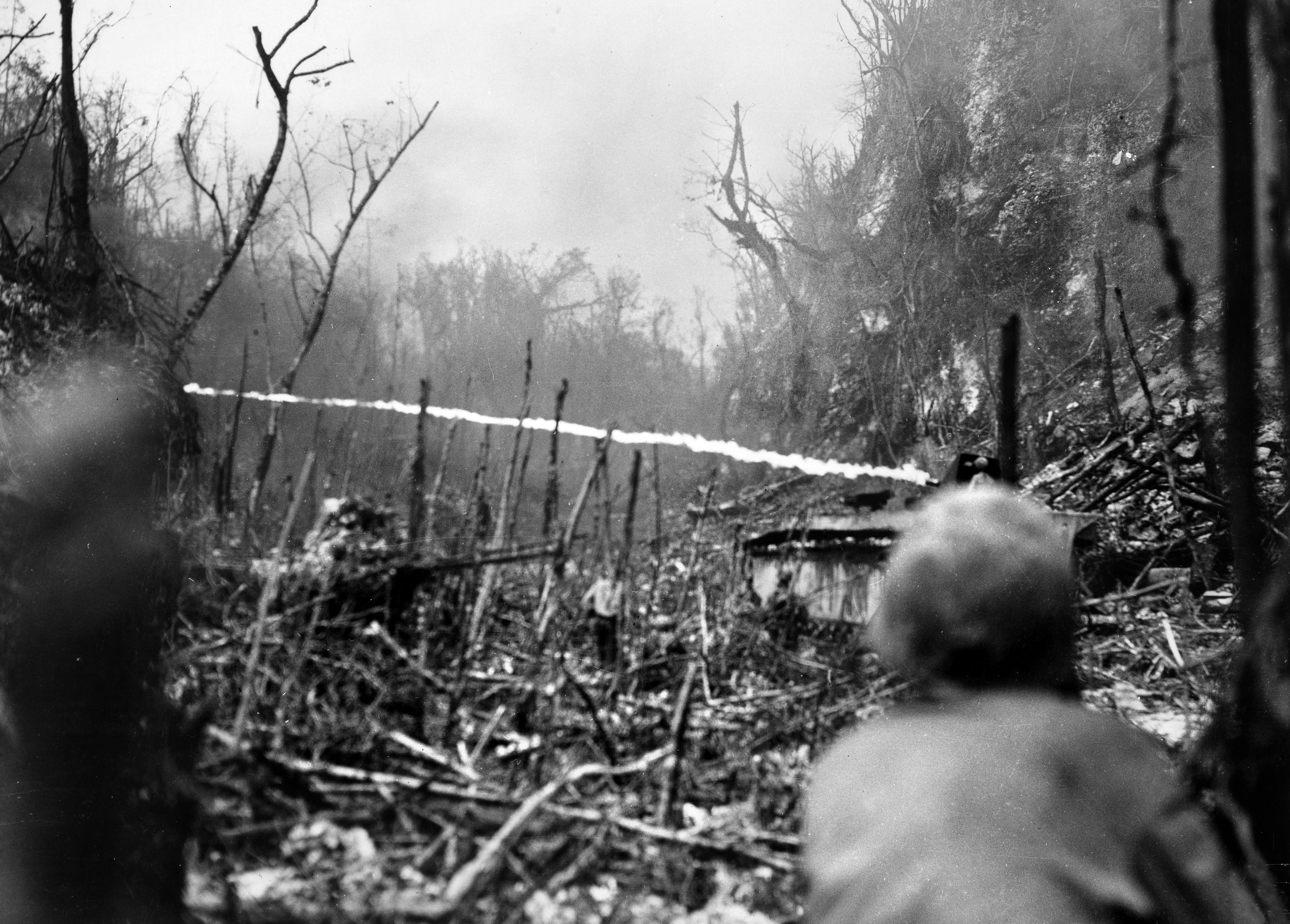
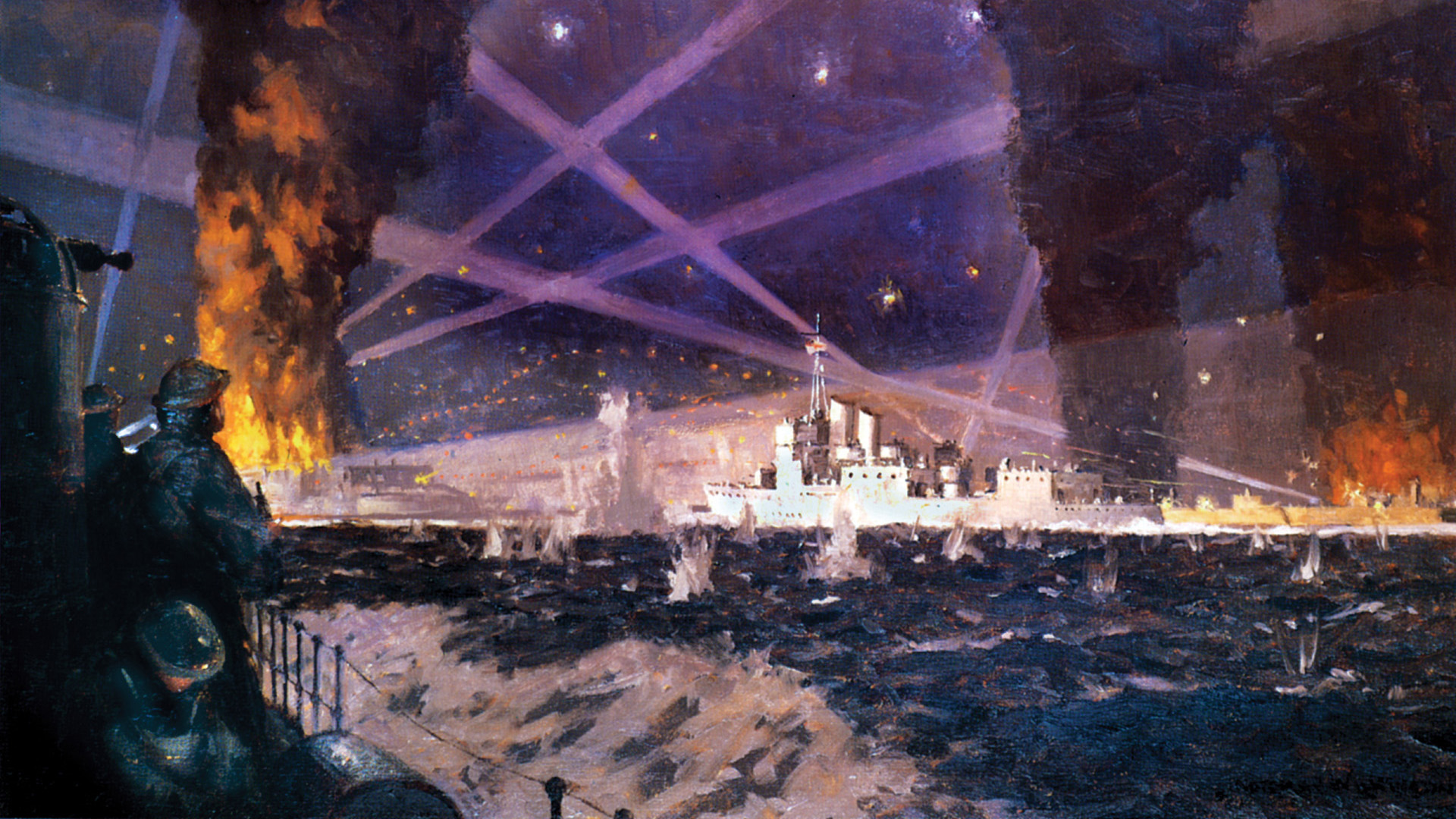
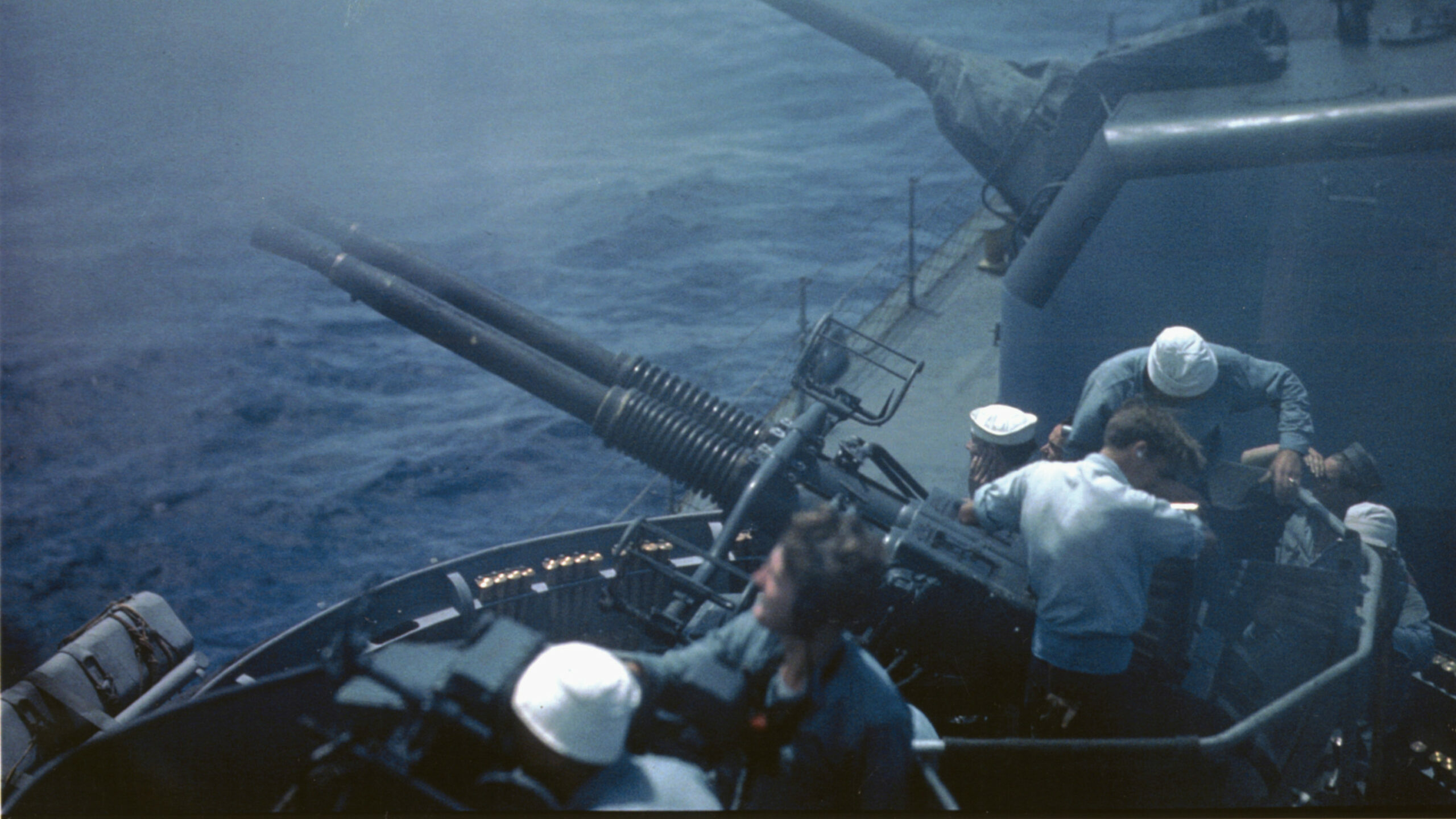
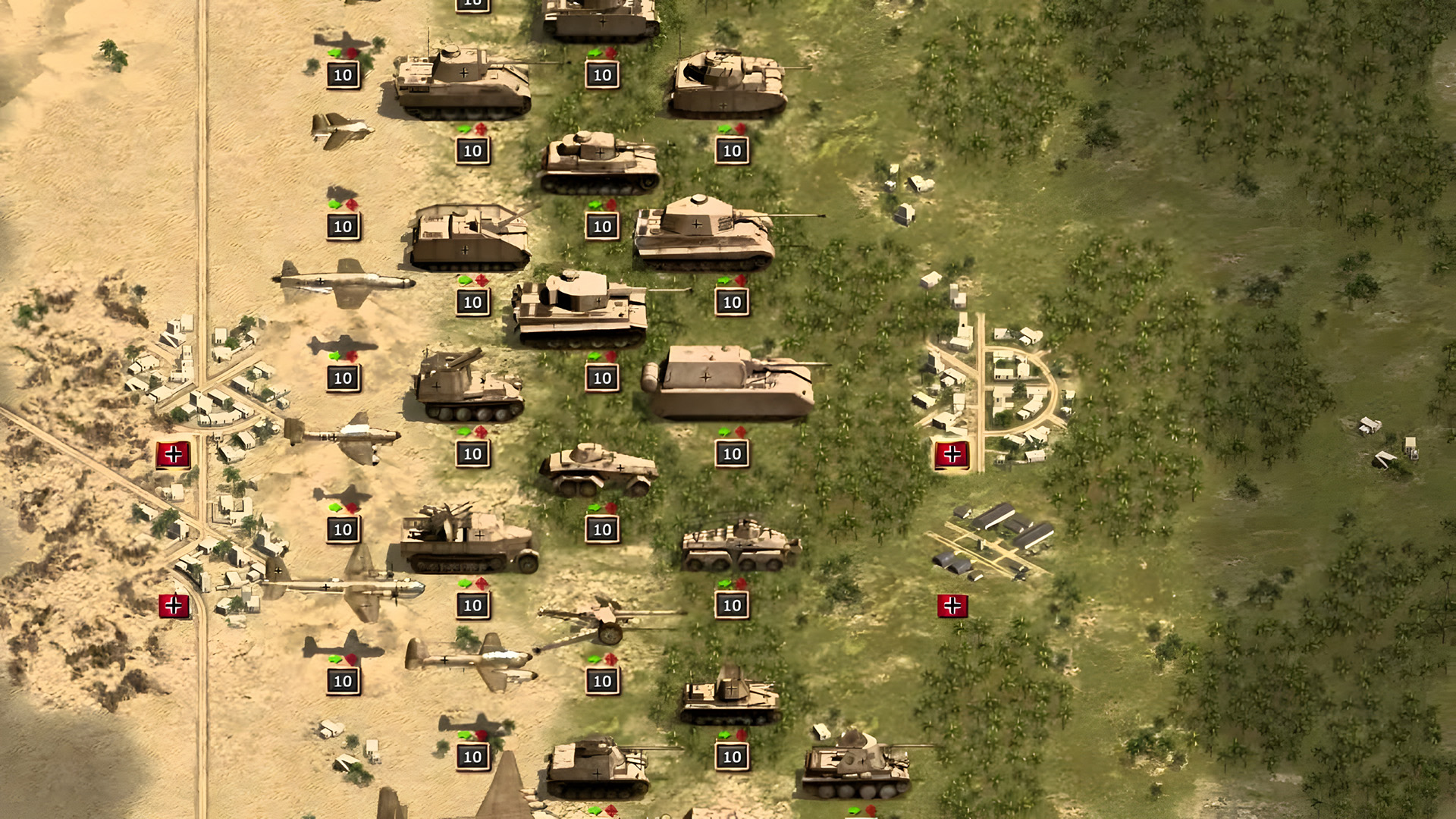

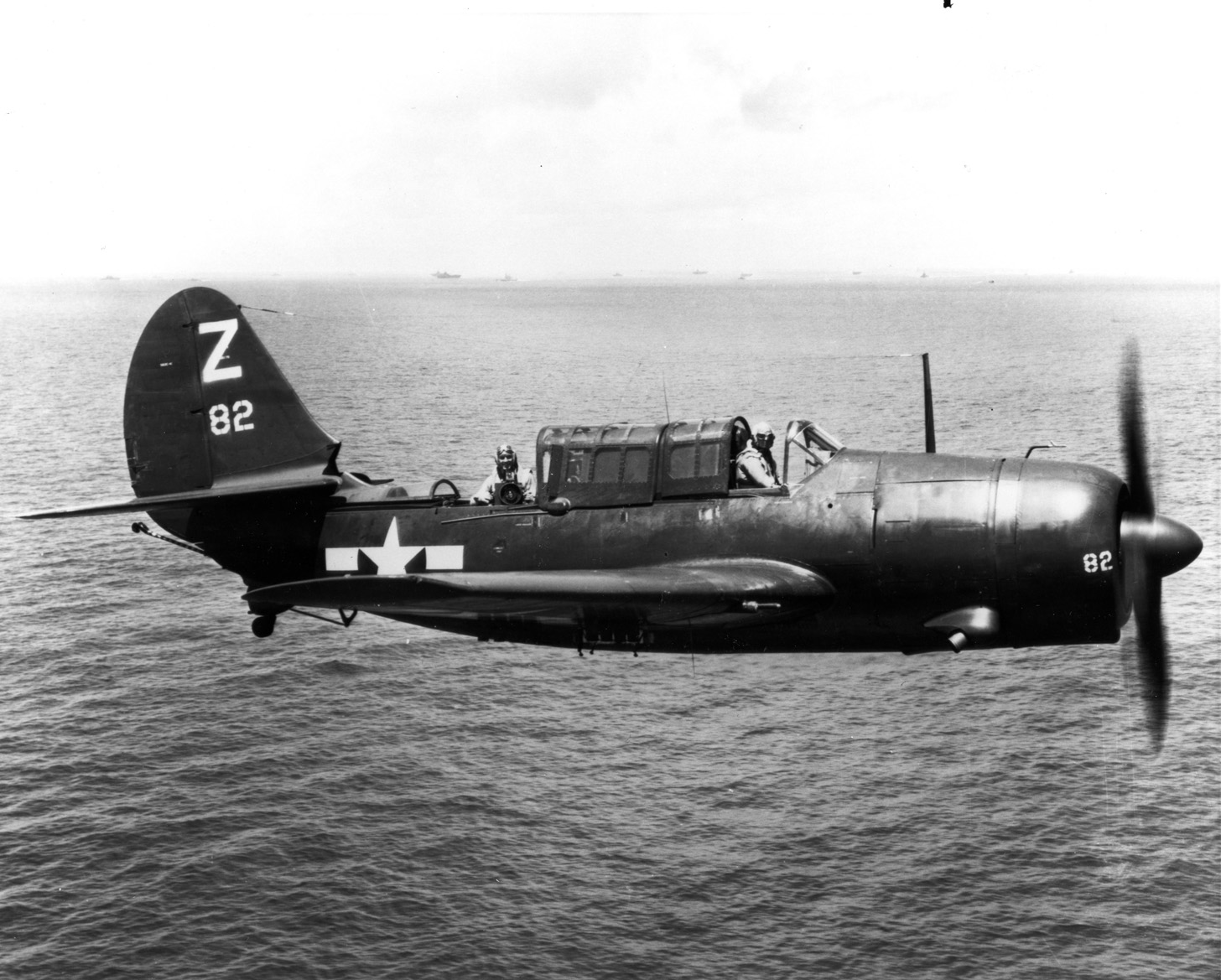
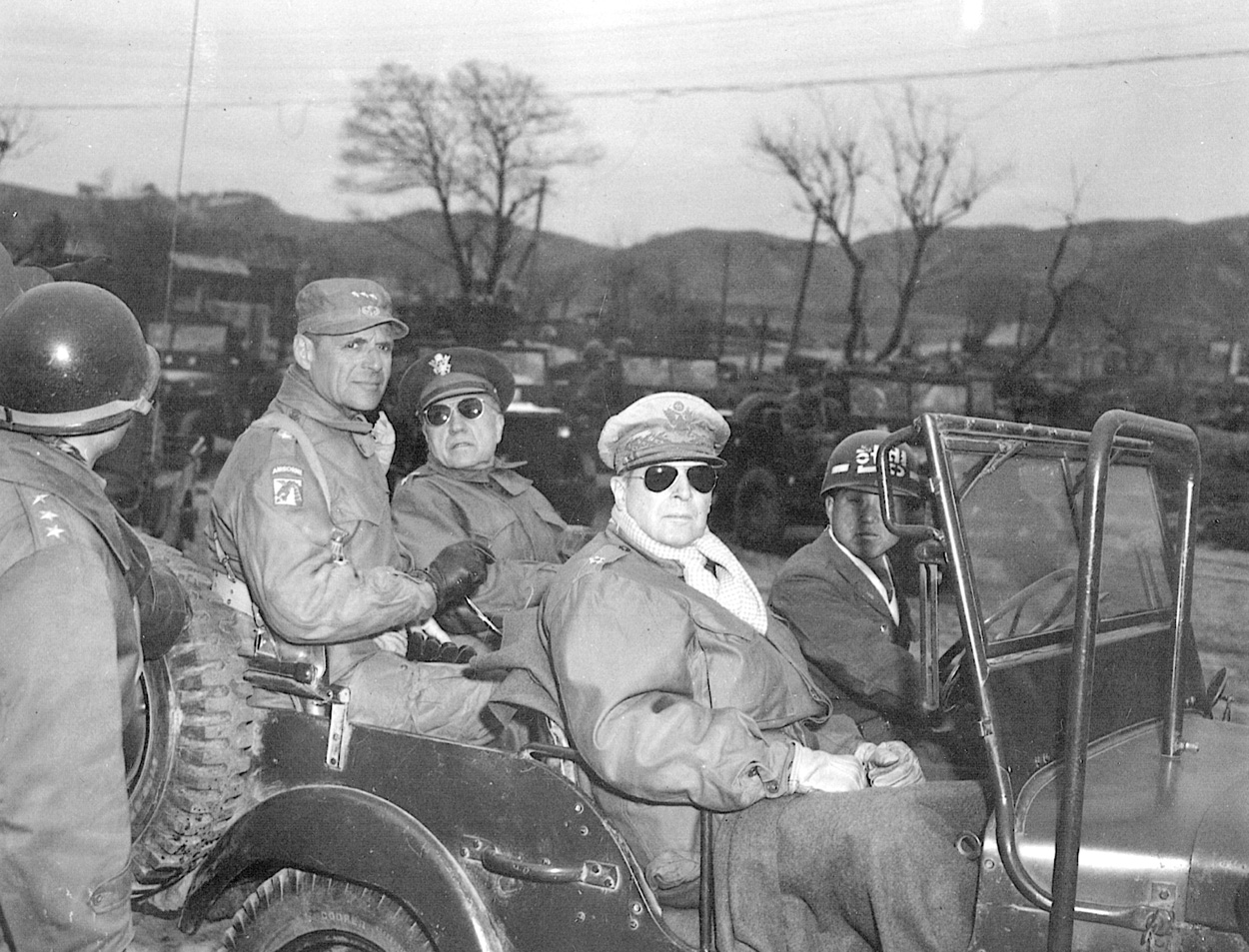
Join The Conversation
Comments
View All Comments